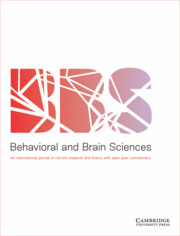No CrossRef data available.
Article contents
Dissociation between regular and irregular in connectionist architectures: Two processes, but still no special linguistic rules
Published online by Cambridge University Press: 01 December 1999
Abstract
Dual-mechanism models of language maintain a distinction between a lexicon and a computational system of linguistic rules. In his target article, Clahsen provides support for such a distinction, presenting evidence from German inflections. He argues for a structured lexicon, going beyond the strict lexicon versus rules dichotomy. We agree with the author in assuming a dual mechanism; however, we argue that a next step must be taken, going beyond the notion of the computational system as specific rules applying to a linguistic domain. By assuming a richer lexicon, the computational system can be conceived as a more general binding process that applies to different linguistic levels: syntax, morphology, reading, and spelling.
- Type
- Open Peer Commentary
- Information
- Copyright
- © 1999 Cambridge University Press


